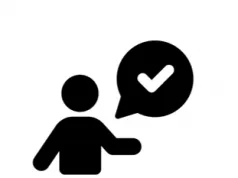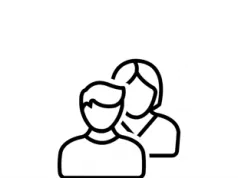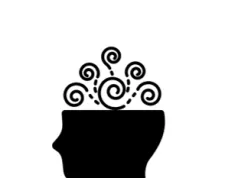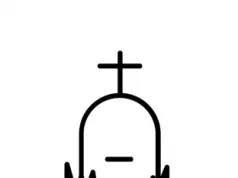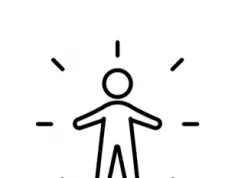Borderline Personality Disorder (BPD) is a mental health condition that can cause great distress for anyone that suffers from it. More often than not, this suffering extends to an extent to those close to the person with it.
Fortunately, there are numerous treatments available. While medication can prove helpful, generally talking therapy is preferred. Two of the most common therapy types used to treat BPD are Dialectical Behavioural Therapy and Mentalisation Based Therapy.
There are some similarities between these two types of therapy, but also some differences. But which is more effective for BPD? In this article, we look at the evidence for both types of therapy.

Definitions
Here are definitions of the two types of therapy:
Dialectical Behavioural Therapy (DBT): DBT is a type of therapy that is tailor-made for Borderline Personality Disorder, though can also be useful for many other conditions. The therapy runs on the basis that an individual is emotionally vulnerable, and that the individual grew up in an environment where emotions were dismissed and not treated. These factors cause an individual to feel guilty or ashamed for having upsetting emotions, which leads to more upset. DBT aims to change this system, using a range of techniques to help, with a focus on acceptance and problem-solving.
Mentalisation-based Therapy (MBT): MBT uses a range of techniques to try and help an individual understand themselves and their thoughts more. Mentalisation itself is the ability for an individual to think about thinking – essentially allowing an individual to examine their own thoughts, and the effect they have. MBT can help an individual understand what goes through the mind of others, as well as making an individual more aware of what happens in their own mind. This form of therapy is useful in various personality disorders.
What are the differences?
As seen in the definitions above, there are some differences between DBT and MBT. There are more similarities, but the subtle differences can help some people decide between the two.
DBT mainly involves analysing behaviour, mindfulness and dialectics [1]. MBT meanwhile involves psychoanalysis, attachment theory and the link between thoughts and feelings [1].
MBT has also been referred to as offering a more “practical” and “common-sense” approach when compared to DBT [2]. However, this is open to debate, with everyone likely to experience these therapy types differently.
DBT was created especially by esteemed professor Marsha Linehan, who used her own experiences to create the treatment. MBT meanwhile offers more of an integrative approach which involved combining other types of therapy.
MBT may be seen as more of as a type of therapy that goes deeper into the human mind, with DBT typically focused more on current behaviour. Though both forms of therapy are adaptable.
Effectiveness
Both DBT and MBT have proven effective. Both treatments are capable of treating a range of people. While they are both mainly used for Borderline Personality Disorder, they can also be helpful in the treatment of other conditions.
DBT has a strong evidence base which underlines its effectiveness. One study that reviewed the findings of several other studies into BPD found that DBT had a “moderate effect” on patients [3]. It is used a lot by the NHS for BPD patients.
Research into MBT is also very positive. A study in 2008 looked at a cohort of patients with BPD who were treated with MBT. The authors then followed-up with the patients eight years after their original treatment to assess long-term outcomes [4]. They found that undertaking MBT was linked with longer periods of employment and fewer hospitalisations, when compared with those who are not treated with MBT [4].
Aside from the examples above, there are many other articles and research papers into their effectiveness. There have been some suggestions that they can treat other personality disorders, and potentially conditions like Eating Disorders and Bipolar Disorder.
A study into DBT vs. MBT
A well-known study that directly pitted DBT and MBT against one another came in 2019 [5]. The study involved 90 patients, all of which had been diagnosed with BPD. They received either DBT or MBT over a 12-month period [5].
The researchers then compared the outcome of the two different groups. They found that the outcomes appeared to be slightly more positive for DBT. Those who did DBT reported a strong decline in incidents of self-harm and emotional dysregulation [5].
Importantly though, both MBT and DBT had a positive effect. Studies like these typically involve small numbers, meaning its findings are always going to have a margin of error. But both did have a positive effect on patients here.
Summary
It is important to remember that both DBT and MBT are effective for Borderline Personality Disorder – and other conditions for that matter. Some people will find one more useful than the other – then there will be some people who don’t find either to be helpful.
The important thing is that anyone that is struggling with their mental health receives the treatment they need to improve their wellbeing. There are a range of other Types of Therapy for Mental Health if needed. But here, both DBT and MBT are proven to be effective.
Read Now
- Therapy Home
- Everything You Need To Know About Talking Therapy
- FAQ’s About Talking Therapy
- Dialectical Behavioural Therapy: Everything You Need to Know
- The Advantages and Disadvantages of Dialectical Behavioural Therapy
- 8 Things You Should Know About Dialectical Behavioural Therapy
- What Conditions Can Dialectical Behavioural Therapy Treat?
- Which Is More Effective for Borderline Personality Disorder: DBT or MBT?
- Mentalisation Based Therapy: Everything You Need to Know
- The Advantages and Disadvantages of Mentalisation Based Therapy
- 8 Things You Should Know About Mentalisation Based Therapy
Disclaimer
This website should be used purely for informational purposes, and does not intend to, nor should it ever, be used as a replacement for professional medical advice.
We strive to keep all of our pages updated, and ensure that our website is full of factual and in-depth information. However, we encourage you to browse this website with care.
As a reminder, this website and all content within it cannot and should not replace the advice of a trained medical professional. You can read our full disclaimer at this link.
Helplines
If you are struggling with your mental health, help is available. With the right support and treatment, you can make a recovery. For information on helplines, or if you are in a state of crisis, please visit our crisis page by clicking on the relevant link for your geographical location (United Kingdom), (United States), (International). You can also see how to get mental health treatment and the process involved by clicking this link.
References
[1] Swenson, C. & Choi-Kain, L. (2015). Mentalization and Dialectical Behavior Therapy. American Journal of Psychotherapy. 69 (2): p199-217.
[2] Choi-kain, L. & Unruh, B. (2016). Mentalization-Based Treatment: A Common-Sense Approach to Borderline Personality Disorder. Psychiatric Times. 33 (3).
[3] Kliem, S., Kröger, C., & Kossfelder, J. (2010). Dialectical behavior therapy for borderline personality disorder: A meta-analysis using mixed-effects modeling. Journal of Consulting and Clinical Psychology. 78(6): p936–951.
[4] Bateman, A. & Fonagy, P. (2008). 8-Year Follow-Up of Patients Treated for Borderline Personality Disorder: Mentalization-Based Treatment Versus Treatment as Usual. American Journal of Psychiatry. 165 (5), p631-638.
[5] Barnicot, K., & Crawford, M. (2019). Dialectical behaviour therapy v. mentalisation-based therapy for borderline personality disorder. Psychological Medicine, 49(12), p2060-2068.




